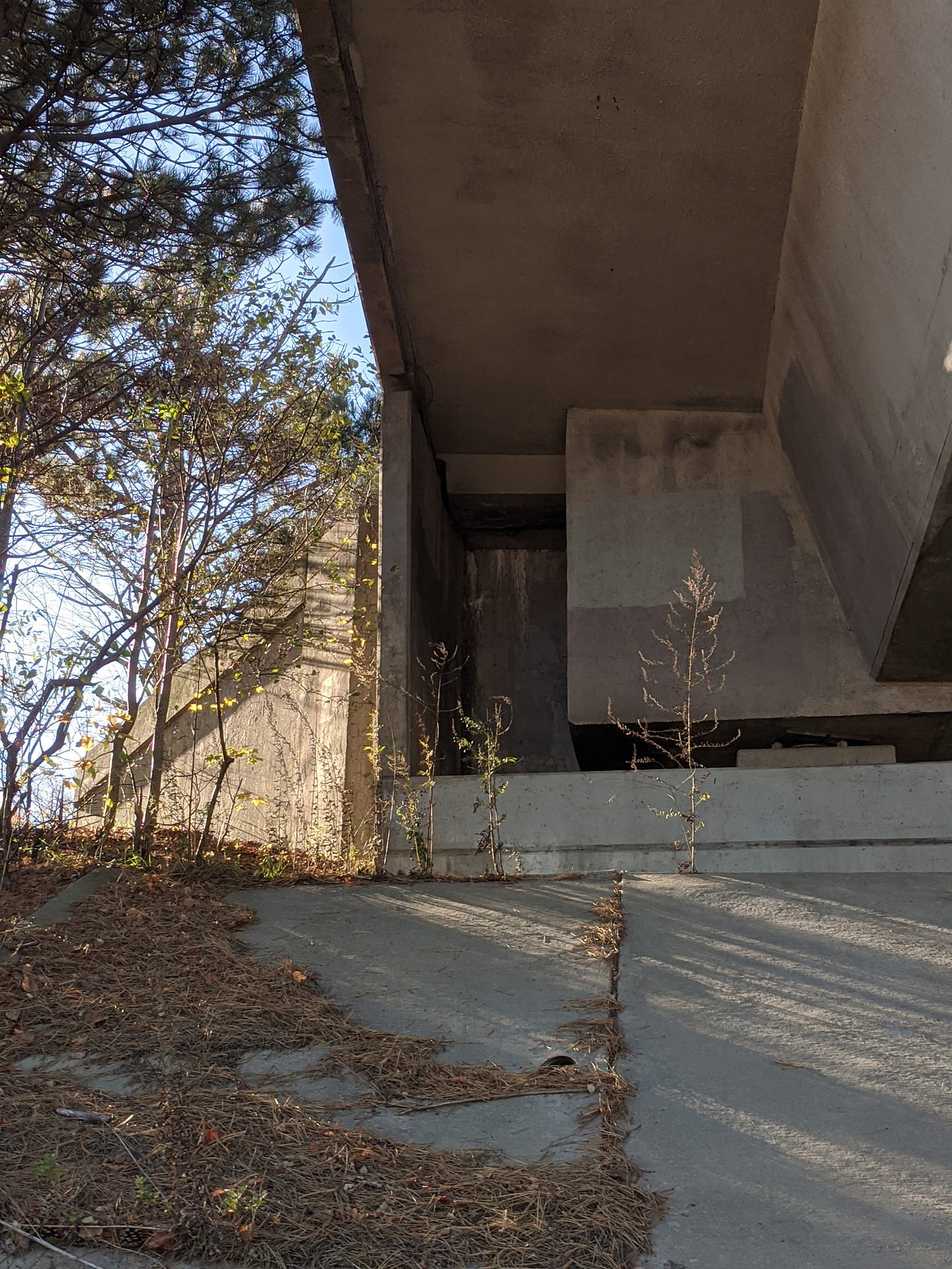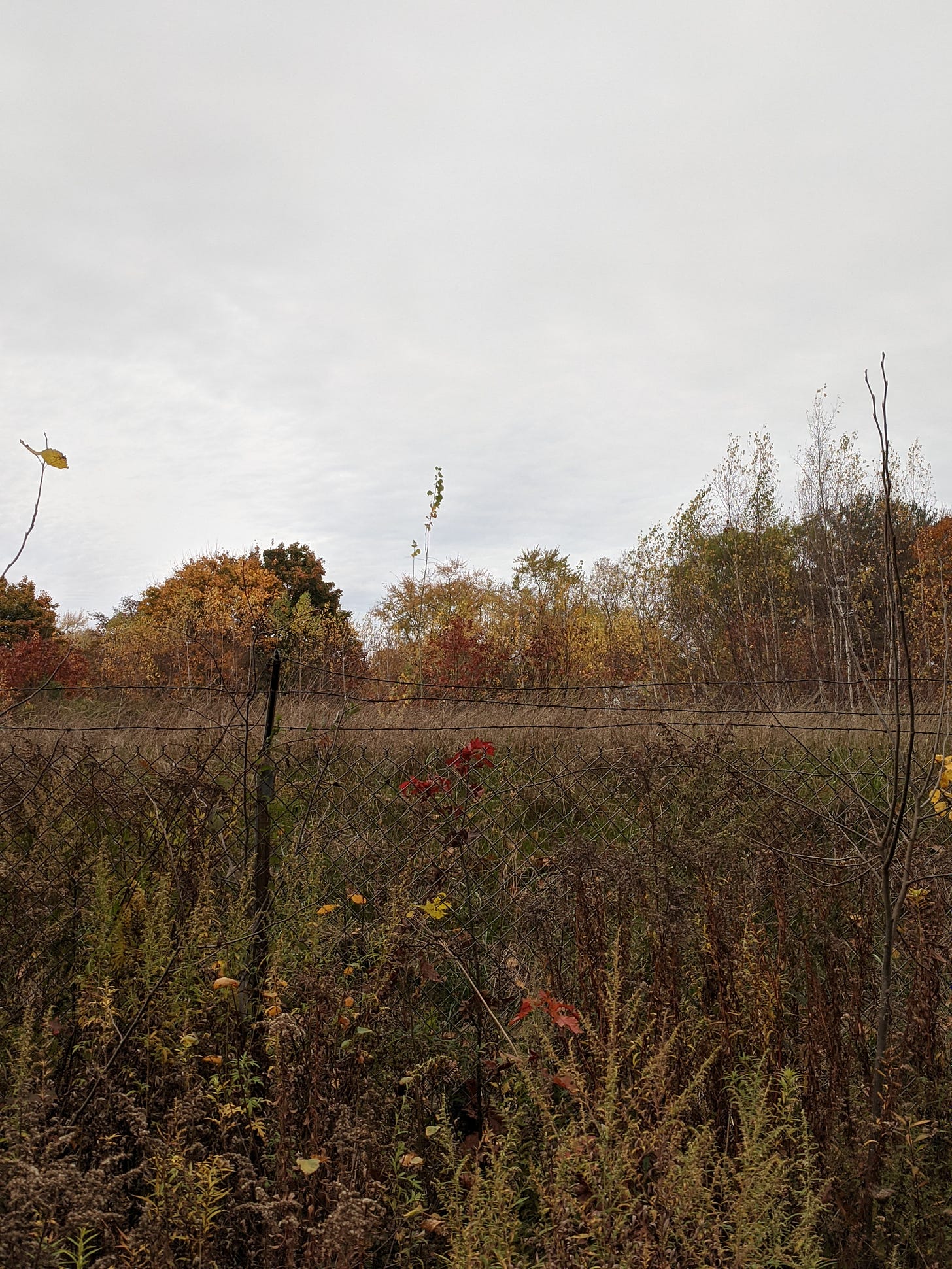Today’s Bewilderment is an essay that was published in fall 2022 in Arnoldia, the quarterly of the Arnold Arboretum at Harvard University. I’m grateful to Matthew Battles and the production team there who made a place for this essay and one of the paintings I made in 2021 that deals with the same questions of seeing and relation with plants.
I am also very pleased to be able to let you know about a few upcoming events in November and December.
First of all, on November 9 at 7 p.m. Irish time in the Classics Museum at UCD, Jeanne Tiehen will direct a staging of An Archaeology, for which I’m making costumes. In-person only; tickets are free and I will post more information when I have it.
On November 19 at 2 p.m. US Eastern I will give the first of two lectures as the Annulet Inaugural Linkages Lecturer. I will give a talk entitled “When you get someplace new, learn to read the landscape like an alphabet”. This talk will be broadcast online, for free. To register, please click here.
On November 21, along with two other writers to be confirmed, I will read and talk with the others as part of the Trinity College Literature & Resistance Series, in the Trinity Long Room Hub. Event and booking information will be here (in-person only).
On December 10 at 2 p.m. US Eastern I will give the second of my Linkages Lectures. I will give a talk entitled “On the line”. This talk will be broadcast online, for free. To register, please click here.

The largest city in the place I call Maine is called Portland, and it lies along the Atlantic coast in the northeast of the country called the United States. For as long as the city has existed as a city, its industries have been tied to the sea: fishing, lobstering, clamming, oystering, seaweed-picking—though that is changing: wealth clusters along the seafront and the city's industry turns toward tourism. At low tide the horizon goes even further out than you'd think possible, and between the expensive houses and the drawn-back water, the seaweed pickers go, bent over, along the little strip of land that belongs to everyone. The coastline just north of the city becomes rocky, and small granite islands house wealthy summer residents and year-round island people who know the ferry schedule by heart
.A map eye and a surveyor's eye, a deed eye; an insurance company's eye, a property investor's eye, a painter's eye; an art collector's eye beholding the paintings of the "empty" landscape that hang in the well-appointed houses in the best neighborhoods, in the white cool rooms of the city's art museum. We perceive the beauty of a map or painting in the manageable space between the object and ourselves, the gaze a place that holds the object still. In the map and the landscape painting—objects I feel such a fondness for—the place that holds me is reduced to a place that I can hold. It becomes property and I am its arranger.
The world goes on around the museum and the city records office, in infinite overlapping circles. The room and the building, the city and the state, are permeated by economies and public-health statuses and modes of transit and pollution, by taste and custom and the determining structures of US racial and class hierarchies. We work temporary jobs in Portland and pay two-thirds of our income to the landlord. It is a pandemic, so we don't go anywhere. We couldn't afford to go out in this city in any case. To occupy my time and thoughts, I take walks and ride my bicycle: watching the light change is free, noting down the seasonal appearance of weeds in the cracks is free. I am moving through a landscape that is unfamiliar to me, and I cannot see it from outside—outside the drafty, unheated apartment, outside the exorbitant rent, outside the virus transmitted by breath. Nor from outside the sea air, the smell of the white pines, the sting of first snow on a stiff breeze. Only from inside, where I am: with you
.I find my way, in copper October, along a causeway to an island that houses the state school for Deaf and Blind students, a cemetery where the dogs and horses of a former governor have long since turned into soil themselves, and a clearing in which visitors build structures out of twigs, leaves, shells, seaweed, rocks, pinecones, and a winking belief in fairies. (The children who visit to see the fairy village do not wink, and their houses are furnished with bright orange berries, mushrooms, moss carpets, colorful and smooth stones, the best shells.) The name I know for this island is Mackworth.
Among the trees, the name I know falls away, insubstantial as a piece of Scotch tape. Its granite edges, its carpet of rust-orange pine needles, its non-local roses trimmed back by state park service employees, its sumac, its dulse. I have names for these, and yet the names cannot hold them. They exceed my ability to call them
.In every season, the island's white pines establish the architecture of my passage there. I walk the circumference in autumn's fullness, then in the silence of winter as the wind stirs the ocean into gray slush, and in spring as a bright yellow haze passes through the deciduous trees of the understory. And in the summer, in the rich quick bright unbearable green of living things that know how soon they will be dying.
The tall gray bodies of the pines set a rhythm for seeing. Their needles form paths and fields among the trees. The sunlight falling through them, I receive. The sky they orchestrate among their openings. They are an uncapturable color, a green that is not singular green but green-prismatic with all earth colors: chlorophyll, umber, ochre, iron oxide. Light and vision refracting in air. Among the white pines, at the foot of them, I find a distinct understanding of my proper proportion. The placedness that makes me among and with and makes my gaze through and in rather than at. From the edge of the city I see them, objects on a horizon: but among them, my sight is transformed and I am a subject among subjects. I would like to hold them in this withness and throughness
."Landscape" is an effect of an exterior position. I am wrestling with my love of landscape painting and my position as an outsider to that tradition, by virtue of gender, training, and class—and I am wrestling with the fact of my being-settler in this place, with the history of ownership-as-land-relation I belong to. From a distance, the painter or surveyor perceives an interplay of light, shadow, form, movement. These are arranged as painting or as map, or, if in the mind rather than in material, as property. But this island is a freely offered immersion in color, perspective, time. Surrounded by white pines, it is impossible to take distance. I cannot stand back and see myself apart from them. They remind me we have always been involved in one another, whether I knew it or not.
I was formed in a scientific and religious environment where human beings and other beings are unequal. But despite how my imagination or understanding was formed, the white pines' way of being requires, structurally, that I am among them, beneath them, between them, in their midst. It changes the kind of relationship I can have, and not just to the white pines. The withness they do to me extends limitlessly. They with me, and they with their understory. They with the greyness of the ground, scattered with their rust-orange needles, after long weeks without rain. They with the chipmunks who make holes at their feet. They with and are withed by the non-local roses and the local ferns, the lichen, the sound of the tide arriving, the bladderwrack, the smell of the mud on a hot afternoon coming through the closer sweetness of the needles that carpet the dry ground. They with the conditions of the air—humidity, pollution—and of the water, weather, the salt marshes, the bogs beyond, the fields beyond that. The way the white pines are makes me with, a with that exceeds them and far exceeds me—and exceeds the pronoun "me". Here, among the trees, I find myself one among many, even unseen many, moving in a concert it is impossible to know in full.
The island, the ocean, the iron streaks in granite, the yellow seaweed and its scent in the afternoon air, the red hips of the roses spattering September air: I don't want a painting I can own as soon as I see, that lets me say I know what you are. I want something that can do to me again what has been done here—that amongs me. As color does to me, as scent does: throughs me. Withs me. Bewiths me. This human head and your lowest branches. The light held there, having fallen through you from the nearest brightest star. The air I expel from my lungs and take into my lungs. The words-failness of that light, air, open, up, around space. An experience closer to what I name preposition than noun: more than thing it is movement, direction, location, a totality of space and passage.
The pines make this sense as they move through time and space. By the time I arrive where they are, they have ordained an entire way of being, and I enter it. This is true of almost all places I go: the city and its apartments, the museum and its rooms. They have been made in advance and they will outlast me. Among the white pines on this rocky island I am altered to fit the time and space of the pines. What is this alteration? It changes the I that I am, and the eyes that I have. The duringness and withinity of the pines are a grammar that refits me to an accompanied and accompanying multiple subjecthood. No longer the center of the sentence-shaped universe or the distant viewer of a landscape made to hold, I am here: with the pines, with the world they are.
Thank you for reading! See you in a week.










